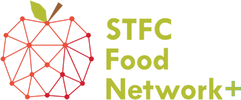 We’d all like to trust that the ingredients of our food products match their labels but unfortunately food adulteration – where certain ingredients are substituted for cheaper, indistinguishable alternatives – is rampant within the industry. Although such products can be identified using high-spec laboratory equipment, there is an urgent need for a portable and cheap detection system on the front line - a problem Paul Richardson has been addressing with the wider STFC Food Network+. “The adulterated products that are caught are currently only the tip of the iceberg – we have no idea how much is circulating undetected” says Paul, whose interest in the issue began with his Master’s degree project which investigated whether spectroscopic methods could detect adulterated coconut water. Proclaimed as a natural ‘superfood’ with a wealth of health benefits, coconut water sales have rocketed over recent years. But severe allergic reactions and even deaths have resulted from counterfeit products containing undeclared cow’s milk, often used to improve the product’s appearance. For his Master’s project, Paul demonstrated that contaminated coconut water could be detected using Raman scattering, which irradiates samples with a laser beam and measures the pattern of scattered light. Depending on the types of atoms, some of the scattered light undergoes an energy change, causing the wavelength to shift. Examining the scattering spectrum produces a distinct ‘fingerprint’ that can be used to work out the molecular composition. Whilst this works well in the lab on carefully-prepared samples, conventional Raman can’t be used on drinks still in the original packaging, which slows down the testing procedure. As Paul explains, “Conventional Raman only measures the scattering directly at the incident spot, meaning that surface scattering completely overpowers deeper signals. The only way to increase depth is to build a more powerful laser which would damage the sample”. At the STFC Food Network+ Sandpit event in February 2018, Paul’s supervisor Roy Goodacre (Formerly University of Manchester - now University of Liverpool) joined forces with Pavel Matousek (STFC Central Laser Facility) to pitch the idea for a project investigating a new technique for through-container detection: Spatially Offset Raman Spectroscopy (SORS). For Paul, it would perfectly combine his analytical skills, interest in food adulteration and thirst for research experience. “I was delighted to be able to extend this work through the STFC Scoping Project award, particularly as SORS could be a very valuable detection technology within food systems” Paul says. SORS is based on the principle that deeper scattering is more likely to be detected at a spatial offset from the incident laser. Measurements are made at both the incident spot (to get the surface measurement) and at the offset (where more deeply penetrated signals are stronger than the surface), then statistical methods used to subtract the surface signal. Crucially, this allows greater penetration to be achieved without a stronger laser. This time Paul turned his attention to adulterated fruit juices. Since pure products command a considerably higher ‘premium’ price tag, easy money can be made by substituting fruit sugars for high-fructose corn syrup. To see whether SORS can detect this, Paul prepared a range of fresh fruit juices adulterated with different amounts of syrup, but with the same total sugar concentration. Keeping things as realistic as possible, Paul tested the solutions in packaging from supermarket-bought products but immediately hit a problem. “We found that Tetra Pak and wax cartons completely stop the laser from getting through” he says. “It’s unfortunate since the vast majority of fruit juice products come in such packaging”. Undeterred, Paul persevered using transparent glass and plastic bottles, which admit laser light, and demonstrated that SORS does have potential for a portable system. “The proof of concept is absolutely there, all we need to do is tweak it” Paul says. “At the moment, there is still some noise from the outer packaging but our group are working on mathematical approaches to subtract this from the final signal”. Although fruit juices may be out at present, an alternative avenue for portable SORS could be the bottled oil market, since these frequently come in glass or clear plastic containers. “There is certainly a need since hazelnut oil is often used in place of more expensive oils, putting people with nut allergies at serious risk” he says. “I’m very proud to be part of the SFN, particularly because as a group it is pushing forward to make the world a better place, working together with companies and industrial partners” says Paul. He particularly attributes it to helping him gain a thorough understanding of the academic world, including forming collaborations, sourcing funding and ‘learning about science I didn’t even imagine existed!” An enthusiastic cook, he has enjoyed learning how his technical skills can be applied to improve food systems for the future. “As an analytical chemist, it would be strange for me to not be interested in food: the kitchen is basically a tasting laboratory and one that deserves honest ingredients” he concludes.
1 Comment
|
AuthorJune 2024 - Archives
June 2024
Categories |
- Home
- Webinars and Events
- About the SFN+
- News
- Blog
- Expert Working Groups
- Funding
-
Publications
- Bioeconomy positioning paper
- SFN+ 5th Annual Conference
- OMM Policy Report
- ‘Multi-Stakeholder International One Day Workshop on Organic Agri-Food Value Chains for Net Zero’ Report
- SFN 2050 UK Net Zero Food report
- Sustainable Cold Food Chain Booklet
- Food Sensing Technologies for Safe and Nutritious Food
- Sustainable urban and vertical farming
- Projects
- Join/Contact Us

 RSS Feed
RSS Feed


